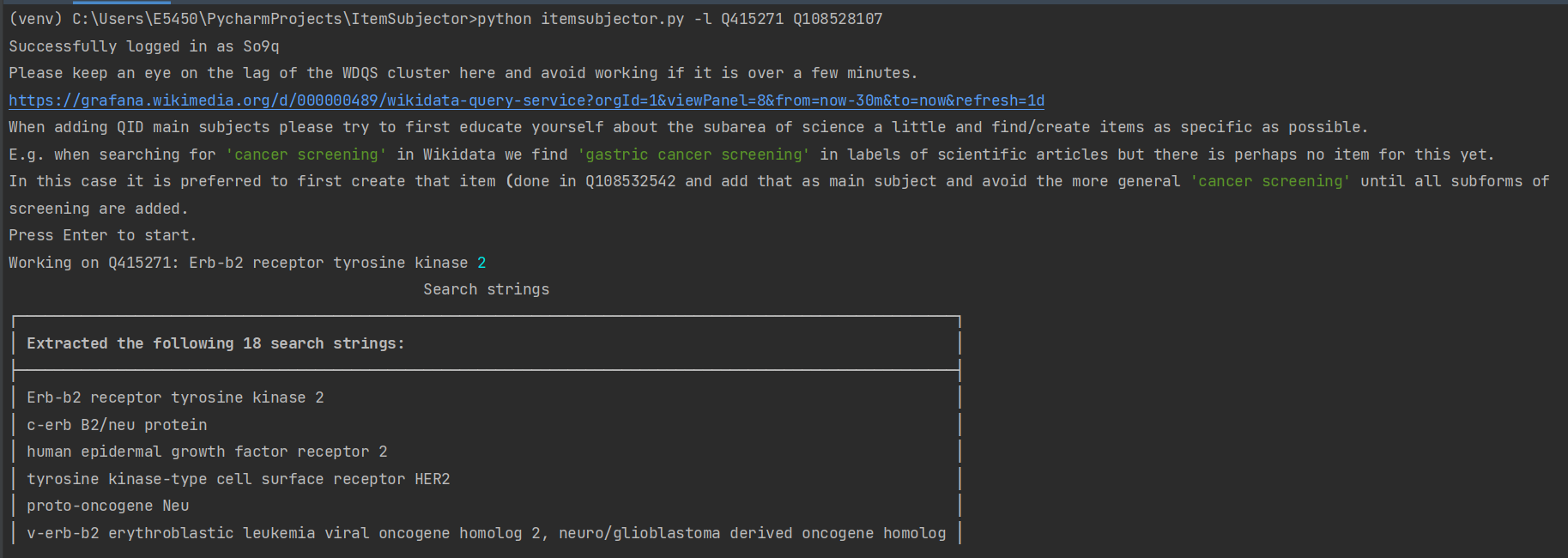This file contains the following documents sumbited for Baruch CIS9665 group 9 fall 2021. 1. Dataset: drug_reviews.csv 2. python codes for text classification: Group 9 Final Submission.ipynb 3. python codes for topic modeling: Group 9 further research topic modeling.ipynb 4. final report: CIS9665_Team9_Final_Project_Report.pdf 5. Notebook in pdf form: Group 9 Final Submission - Jupiter Notebook.pdf 6. Notebook in pdf form: Group 9 further research topic modeling.pdf
NLP techniques such as named entity recognition, sentiment analysis, topic modeling, text classification with Python to predict sentiment and rating of drug from user reviews.
Overview
You might also like...

PhoNLP: A BERT-based multi-task learning toolkit for part-of-speech tagging, named entity recognition and dependency parsing
PhoNLP is a multi-task learning model for joint part-of-speech (POS) tagging, named entity recognition (NER) and dependency parsing. Experiments on Vietnamese benchmark datasets show that PhoNLP produces state-of-the-art results, outperforming a single-task learning approach that fine-tunes the pre-trained Vietnamese language model PhoBERT for each task independently.
Named-entity recognition using neural networks. Easy-to-use and state-of-the-art results.
NeuroNER NeuroNER is a program that performs named-entity recognition (NER). Website: neuroner.com. This page gives step-by-step instructions to insta
Named-entity recognition using neural networks. Easy-to-use and state-of-the-art results.
NeuroNER NeuroNER is a program that performs named-entity recognition (NER). Website: neuroner.com. This page gives step-by-step instructions to insta
Implemented shortest-circuit disambiguation, maximum probability disambiguation, HMM-based lexical annotation and BiLSTM+CRF-based named entity recognition
Implemented shortest-circuit disambiguation, maximum probability disambiguation, HMM-based lexical annotation and BiLSTM+CRF-based named entity recognition

Spacy-ginza-ner-webapi - Named Entity Recognition API with spaCy and GiNZA
Named Entity Recognition API with spaCy and GiNZA I wrote a blog post about this

Framework for fine-tuning pretrained transformers for Named-Entity Recognition (NER) tasks
NERDA Not only is NERDA a mesmerizing muppet-like character. NERDA is also a python package, that offers a slick easy-to-use interface for fine-tuning

CrossNER: Evaluating Cross-Domain Named Entity Recognition (AAAI-2021)
CrossNER is a fully-labeled collected of named entity recognition (NER) data spanning over five diverse domains (Politics, Natural Science, Music, Literature, and Artificial Intelligence) with specialized entity categories for different domains.

Pytorch-Named-Entity-Recognition-with-BERT
BERT NER Use google BERT to do CoNLL-2003 NER ! Train model using Python and Inference using C++ ALBERT-TF2.0 BERT-NER-TENSORFLOW-2.0 BERT-SQuAD Requi

Tool to add main subject to items on Wikidata using a WMFs CirrusSearch for named entity recognition or a manually supplied list of QIDs
ItemSubjector Tool made to add main subject statements to items based on the title using a home-brewed CirrusSearch-based Named Entity Recognition alg
Predicting the usefulness of reviews given the review text and metadata surrounding the reviews.
Predicting Yelp Review Quality Table of Contents Introduction Motivation Goal and Central Questions The Data Data Storage and ETL EDA Data Pipeline Da
VADER Sentiment Analysis. VADER (Valence Aware Dictionary and sEntiment Reasoner) is a lexicon and rule-based sentiment analysis tool that is specifically attuned to sentiments expressed in social media, and works well on texts from other domains.
VADER-Sentiment-Analysis VADER (Valence Aware Dictionary and sEntiment Reasoner) is a lexicon and rule-based sentiment analysis tool that is specifica
VADER Sentiment Analysis. VADER (Valence Aware Dictionary and sEntiment Reasoner) is a lexicon and rule-based sentiment analysis tool that is specifically attuned to sentiments expressed in social media, and works well on texts from other domains.
VADER-Sentiment-Analysis VADER (Valence Aware Dictionary and sEntiment Reasoner) is a lexicon and rule-based sentiment analysis tool that is specifica
Concept Modeling: Topic Modeling on Images and Text
Concept is a technique that leverages CLIP and BERTopic-based techniques to perform Concept Modeling on images.
A text augmentation tool for named entity recognition.
neraug This python library helps you with augmenting text data for named entity recognition. Augmentation Example Reference from An Analysis of Simple
NLP-based analysis of poor Chinese movie reviews on Douban
douban_embedding 豆瓣中文影评差评分析 1. NLP NLP(Natural Language Processing)是指自然语言处理,他的目的是让计算机可以听懂人话。 下面是我将2万条豆瓣影评训练之后,随意输入一段新影评交给神经网络,最终AI推断出的结果。 "很好,演技不错
Text-Summarization-using-NLP - Text Summarization using NLP to fetch BBC News Article and summarize its text and also it includes custom article Summarization
Text-Summarization-using-NLP Text Summarization using NLP to fetch BBC News Arti
Bidirectional LSTM-CRF and ELMo for Named-Entity Recognition, Part-of-Speech Tagging and so on.
anaGo anaGo is a Python library for sequence labeling(NER, PoS Tagging,...), implemented in Keras. anaGo can solve sequence labeling tasks such as nam
Bidirectional LSTM-CRF and ELMo for Named-Entity Recognition, Part-of-Speech Tagging and so on.
anaGo anaGo is a Python library for sequence labeling(NER, PoS Tagging,...), implemented in Keras. anaGo can solve sequence labeling tasks such as nam
Named-entity recognition using neural networks. Easy-to-use and state-of-the-art results.
NeuroNER NeuroNER is a program that performs named-entity recognition (NER). Website: neuroner.com. This page gives step-by-step instructions to insta